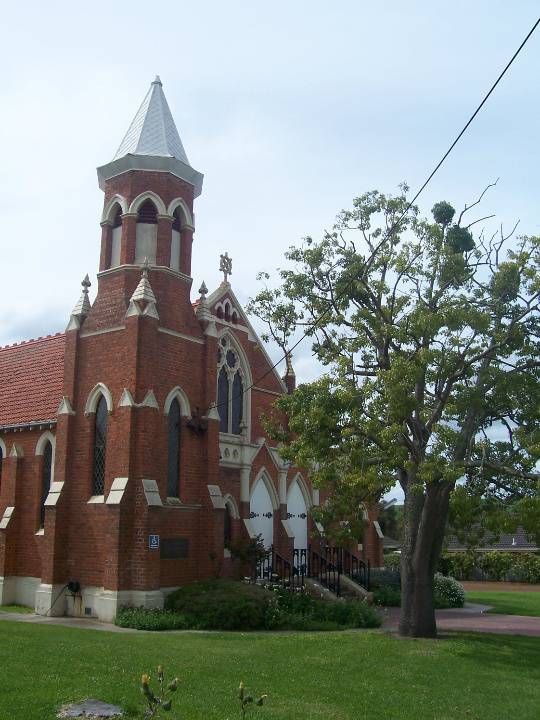| Back to search results » | Back to search page » |
|
SCOT'S UNITING CHURCH
Other NamePRESBYTERIAN CHURCH (FORMER) Location176 HENTY STREET, CASTERTON, GLENELG SHIRE LevelRecommended for Heritage Overlay |
|
Statement of Significance
What is Significant?
The present Scots Uniting Church, at 172-176 Henty Street, Casterton built in 1908 and opened in 1909, was the second Presbyterian Church in the town. The first, built in 1864, survives about 100m to the northeast as part of the Glenelg Masonic Lodge. The architect for the present church was Thomas Watts of Watts and Son, a distinguished and prolific member of the profession who had practised in Melbourne from the mid 1850s, for some time in the partnership of Smith and Watts in the 1870s when he was responsible for extensive works at the Baptist Church in East Melbourne and Christ Church in Brunswick. He designed Scots Church in a free but still conservative interpretation of the Decorated Gothic Revival style using red brick with cement render details, terracotta tiles and some wrought iron work. The contractor was a Mr. T. O. Bennett and the cost was slightly less than 2,000 pounds. The land had been donated by Samuel Gillespie who laid the foundation stone. The well-finished interior approximates the form of an auditorium which is well-suited to worship which emphasises preaching. There are many memorials to important members of this and amalgamated congregations, including an honour board to those who served in the Great War, to Samuel Gillespie and Mr. and Mrs. W. S. Peden, very important merchants in Casterton. The first Minister in the new Church was Rev. Karl Forster M.A., from 1909 to 1916. As well as having absorbed smaller congregations from surrounding areas, the Presbyterians and the Methodists joined to create the Casterton Uniting Church congregation in the late 1970s. The building retains a very high degree of integrity externally and internally, including all of the original and early furniture. It is in excellent condition.
How is it Significant?
The Scots Uniting Church is of historical, social and architectural significance to the Glenelg Shire.
Why is it Significant?
The Scots Uniting Church is of historical significance for representing the early influence and importance of the Presbyterian Church in Casterton and the district generally. It demonstrates the dedication of the local congregation and its clergymen to establishing and consolidating religious order in the far Western District of Victoria. Scots Uniting Church is of social significance as the continuous focus for the Presbyterian and subsequently the Methodist congregations of Casterton for over 100 years. The church is of architectural significance for as a very late example of the work of the important architect, Thomas Watts, its free interpretation of the Decorated Gothic Revival style and the completeness and integrity of the interiors which reflect the values and prosperity of the congregation.
Group
Religion
Category
Church




